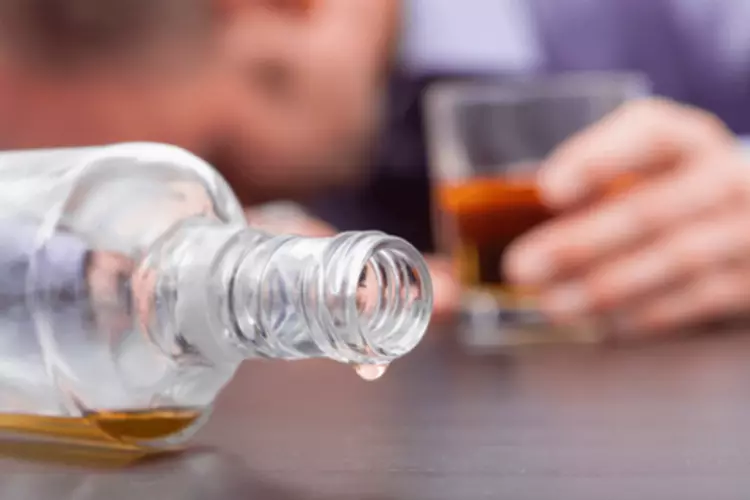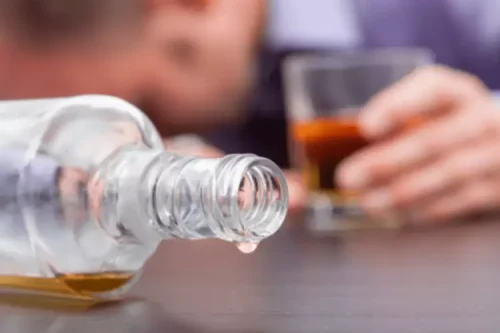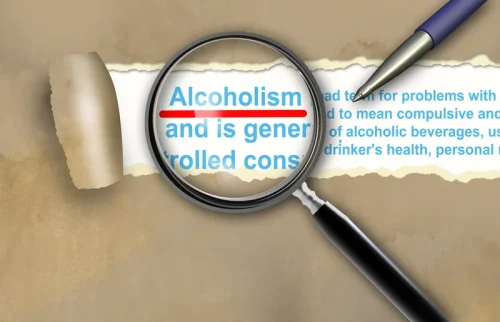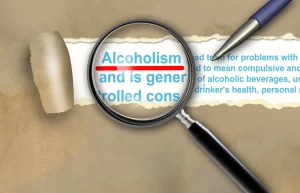Understanding Alcohol Sweats and Withdrawal Symptoms

The combination of “feeling warm” but having a decreased body temperature and cognitive awareness contributes to an increased risk of hypothermia when drinking in cold environments. Medically-supervised detox is crucial for managing alcohol withdrawal safely. Treatment involves medications like benzodiazepines to ease symptoms like sweating while monitoring vital signs. Counseling and therapies then address the psychological addiction for lasting recovery.
- If you or a loved one struggles with alcoholism, don’t try to quit drinking cold turkey at home.
- As a first step, we offer a free addiction assessment, where we can develop an understanding of the difficulties you’ve been experiencing and talk you through how we could help.
- Alcohol intolerance can significantly impact the quality of life, causing discomfort and distressing symptoms like night sweats.
- You should seek medical attention immediately if night sweats are occurring after abstaining from alcohol and in the presence of any of the other alcohol withdrawal symptoms.
- This response is an inefficient and counterproductive effort by the body to maintain thermal equilibrium.
How Long Is Drug Rehab?
Dive into the deadliest effects of drugs, exploring their physical, mental, social, and economic impacts. Discover the life-changing benefits of rehab centers in PA, your key to lasting recovery from addiction. Master how to stop drinking with effective strategies, coping skills, and resources for recovery. ‘ from types, symptoms, impacts on health, to available help and resources. Discover how much alcohol can kill you, understand BAC, and learn prevention strategies for safer drinking. Learn how to redefine your relationship with alcohol, establish healthier habits, and seek effective support.
Health Conditions
Understanding these risks and complications can provide individuals with the knowledge they need to make healthier choices regarding alcohol consumption. If you or someone you know is struggling with alcohol dependence, it’s important to consult with a healthcare professional. Remember, it’s never too Drug rehabilitation late to seek help and take steps towards a healthier lifestyle. Night sweats can be a symptom of alcohol withdrawal, and they can occur as soon as a few hours after the last drink or within several days. Symptoms of alcohol withdrawal, including night sweats, are usually temporary. Sweating is a vital bodily function; it regulates our body temperature, acts as a natural pain reliever, and flushes toxins and chemicals from the body.

Treatment for Alcohol Use Disorder (AUD)

With around 2 years of experience in the wellness industry, she is connected to leading experts and doctors to provide our readers with factually correct information. Due to the hangover inducing a fight-or-flight response, hot flashes may occur while you are drunk and feeling hungover. This loss of self-regulation can lead to oversharing, arguing or talking too much, unplanned sex or drug use, or physical fighting. Anxiety related to poor food choices especially arise if you’re trying to improve your diet or make lifestyle changes. Unveil the why does alcohol make you hot five codeine side effects and understand the hidden risks of misuse and overdose.

How to Cure Afrin Addiction

Unravel what benzodiazepines are, their uses, side effects, and mental health impacts in our revealing guide. After detox, you may experience physical symptoms like nausea, headaches, and fatigue, along with emotional challenges such as anxiety and mood swings. The duration of an alcohol rehabilitation program varies based on individual needs, treatment goals, and the type of program chosen, with options ranging from short-term detox to long-term recovery plans. Learn how to stop video game addiction with effective treatments, prevention tips, and supportive strategies. Explore effective cures for heroin addiction, from therapies to support systems for lasting recovery. Discover why hydrocodone addiction is on the rise and learn about its effects, signs, and treatment options.
If you are struggling with an alcohol use disorder, ask your doctor about treatment options such as counseling or medication-assisted treatment. People experiencing mild night sweats from occasional alcohol consumption may find relief using home remedies. A person may not experience any symptoms or signs of liver damage or scarring, which people call cirrhosis, until the liver is badly damaged. A person should seek immediate medical attention if they experience these symptoms. Most hangovers only last a few hours, but some can last for upwards of 2 days. There are also other reasons why you might sweat while drinking alcohol.
Night sweats are one of the most common symptoms during alcohol withdrawal. They often start within 6-12 hours after your last drink and can last up to 4-5 days or longer. The intensity peaks around hours as your body rids itself of the toxins. Alcohol withdrawal can trigger a cascade of unpleasant symptoms, including night sweats.
- This article covers the possible causes of alcohol-related night sweats, including how to manage night sweats after drinking.
- Discover the need for drug addicts recovery, from overcoming challenges to embracing healthier lifestyles.
- Or perhaps you’re dealing with the smell of alcohol on your body or clothes, or noticing that your bedsheets feel damp.
- As with the food you eat, the stomach and small intestine digest the alcoholic drinks you consume; most of this process occurs in the latter.
- This increase in sweating can put individuals at risk of hypothermia, particularly in cold weather.
Explore the risks of mixing lisinopril and alcohol side effects, from blood pressure impacts to dehydration. Discover essential substance use disorder helplines for compassionate support and effective treatment options. Discover what type of drug alcohol is and its health effects, risks, and impacts on different populations. These strategies can help maintain hydration levels and potentially lessen the occurrence of night sweats. Alcohol, acting as a diuretic, increases urine production and can lead to dehydration.
Staying hydrated is crucial, especially when dealing with alcohol-induced night sweats. Excessive sweating, which is common with night sweats, can lead to significant fluid loss. It is, therefore, important to consume plenty of water to replenish the lost fluids and maintain the body’s fluid balance 5. Adequate hydration also helps the body to process and eliminate alcohol more effectively, potentially reducing the severity of night sweats.
Further Amendment to Duties Addressing the Synthetic Opioid Supply Chain in the People’s Republic of China
Content
Opiate is used to describe opioids found in nature, like heroin or morphine. This information provides a general overview and may not apply to everyone. Talk to your family doctor to find out if this information applies to you and to get more information on this subject. Ongoing slowed breathing can lead to a condition called hypoxia. Although OUD treatment is customized to best fit an individual, treatment programs often use a three-pronged approach to address biological, psychosocial and spiritual issues related to OUD. Log in or create an account for a personalized experience based on your selected interests.
Symptoms of opioid use disorder may be physical, psychological, or behavioral. Treatment will also help you recover and hopefully prevent you from using the drug again in the future. Drug tolerance and dependence are a result of taking any opioid drug for a long time. You can be tolerant to or dependent on a drug, but not yet be addicted to it.
People with OUD can use the guide to complete the necessary steps for effective OUD treatment. People with OUD may have several distinct types of symptoms that can affect behavior, physical health, and mental health. To diagnose opioid use disorder, medical professionals use the DSM-5 Diagnostic Criteria. It outlines 11 symptoms and criteria where you must experience at least two within the last 12 months to receive such a diagnosis. It’s always best to assume the worst and seek medical attention, even with legal risks. TJ’s death certificate lists « oxycodone » – the active ingredient in OxyContin and other prescription opioids – as a factor.
What is the treatment for opioid use disorder?
- With heroin, some of the short-term symptoms of use can include nausea, vomiting, slowed breathing, itching and drowsiness.
- You may also be addicted if you keep using the drug without your doctor’s consent, even if the drug is harmful for you.
- Its ability to cause euphoria contributes to its potential for addiction.
- We also help patients avoid opioid addiction and offer alternative therapies for those at risk or who have concerns about taking opioids.
- They may also take medication for reasons other than those the drug was prescribed for.
It’s also important to understand the co-occurrence of mental health disorders with opioid addiction. Research indicates a significant overlap between post-traumatic stress disorder (PTSD) and opioid use disorder, suggesting that opioids may be used as a coping mechanism for underlying psychological trauma. Addressing these co-occurring disorders is crucial in the treatment and recovery process.
How to tell if a loved one is abusing opioids
However, they also have a high potential for abuse, addiction, overdose, and death. People who are addicted to opioids still may hold down jobs and seem stable at work and home. But over time, the opioid use disorder is likely what is Oxford House to lead to serious problems. When addicted to a drug, a person will continue to use the drug even when it makes life worse.
Physical Signs of Opiate Addiction & Abuse
Sometimes medication can be prescribed to ease side effects or reduce cravings for the drug. Most people find that they benefit from a supervised detox followed by a treatment program. The top hazard of opiate use is developing a full-blown addiction to the drug. Addiction to opiates is not always apparent, but its effects can be gripping to the user and devastating to their family and friends.
To have a professional diagnosis of OUD, a person must meet the criteria defined in DSM-5-TR. It defines people with OUD as having repeated opioid use in 12 months, leading to problems or distress. People with OUD often develop ongoing psychological problems caused or worsened by opioids.
FURTHER AMENDMENT TO DUTIES ADDRESSING THE SYNTHETIC OPIOID SUPPLY CHAIN IN THE PEOPLE’S REPUBLIC OF CHINA
Furthermore, the Centers for Disease Control and Prevention (CDC) reports that a significant percentage of overdose deaths involve opioids, with synthetic opioids like fentanyl being particularly deadly. Methadone and buprenorphine help reduce withdrawal symptoms by targeting the same centers in the brain that opioids target. According to the National Institutes of Health (NIH), you may safely take the medicines long-term, even for life.
Resources for Help and Support
Depression and anxiety are often experienced by people who abuse opioids. Often, symptoms or problems are neglected, and regular health maintenance, such as checkups, colonoscopies, mammograms, etc., are not done. Opioids can also cause problems to the organs in the body, including the brain, bowels, heart, lungs, and bones. Opioids may also consist of street drugs, such as heroin or synthetic fentanyl. People with opioid addiction often display rapid changes in mood and experience irritability, anxiety, and/or manic energy. Frequent lethargy or mental cloudiness could suggest opioid misuse.
What is the difference between opioid use disorder and opioid dependence?
The American Academy of Addiction Psychiatry also has a Patient Referral Program. With heroin, some of the short-term symptoms of use can include nausea, vomiting, slowed breathing, itching and drowsiness. After someone takes heroin, they will usually get flushed skin, constricted pupils and dry mouth. Skin infections can occur if someone is regularly using heroin by injecting it into his or her veins. Suppression of the immune system can cause an opiate user to become sick more frequently. These behavioral shifts contribute to both physical and social isolation, distancing the person from their support networks.
In 2017, opioid abuse was officially named a public health crisis. The number who died of an overdose of opioids in the 12 months ending in April 2021 was estimated to be over 75,000. Nearly 75% of all drug overdose deaths in the U.S. involved an opioid in 2020. Overdose deaths that involve opioids have increased at an alarming rate in recent years — by more than eight times since 1999.
Ketamine Addiction Signs, Symptoms, Treatment & Recovery

Our commitment to quality includes the information we publish on our website. Combining ketamine with other depressants may lead to a serious reduction in heart rate and respiratory function. Ketamine is produced as a liquid, which can be injected; it also appears as a white or off-white powder, which is snorted or dissolved in water and drank, or as a pill. It has been used as a date rape drug because it is odorless and colorless. Once an individual crosses into the addicted state, they spend their days feeling utterly detached from their surroundings and become incapable of leading a normal and productive life.

What are the Risks of Ketamine Addiction?

Behavioral therapy may help individuals recognize the reasons they abuse ketamine and find safer ways to have fun or relieve stress. Ketamine abuse is linked to serious side effects, but therapeutic use of the drug is considered safe. In other case reports of people addicted to ketamine, inpatient rehab helped individuals quit using the drug.

Phone, Video, or Live-Chat Support

Similar in structure to phencyclidine, it was not as potent and was used for the first time on humans just two years later. These studies affirm that the drug was indeed safe, and clinical information showed a good anesthetic effect with fewer side effects. Ketalar, the first branded form, was approved in the United States in 1970. Since then, new brands such as Vetalar, Ketaset, Calypsol, and Ketaject, have become popular. Ketamine abuse can also lead to a condition called ketamine bladder syndrome, or K-bladder.
- This drug has been abused for decades, so several studies have been done to determine the most commonly affected demographic and the effects it has on the population.
- I believe that psychedelic medicines, like psilocybin, MDMA, and DMT, herald a new age of healing in the modern era for those suffering from depression, PTSD, and other ailments.
- These studies affirm that the drug was indeed safe, and clinical information showed a good anesthetic effect with fewer side effects.
Ketamine Addiction and Recovery Facts
- There is hope for a new beginning with substance use disorders, including ketamine misuse and addiction.
- Yes, users of both ketamine and phencyclidine (PCP) can experience hallucinations.
- This will cause people to need larger doses to achieve the same levels of euphoria they initially experienced.
- They can help you get connected with a rehab that fits your needs, clarify information about levels of treatment, and guide you through health insurance coverage for addiction treatment.
Based on the results, the doctor will select an appropriate detox program. Then you will need to choose outpatient or inpatient addiction treatment programs. The fact that alcohol is so easily available makes it a drug frequently used recreationally in conjunction with it. When sold illegally, the drug is sold as a powder, which is sometimes formulated into tablets or capsules. It is used more often in veterinary medicine than it is in human medicine.

Ketamine is used as an anesthetic for medical purposes, but on the streets, it is misused for recreational experiences that are dissociative and psychedelic. Ketamine, in small doses, is being explored as an option to decrease depressive symptoms in cases where they might not respond to other treatments. It’s also being tested as a short-term ‘bridge’ response to severe depressive episodes, allowing more time for patients and their health care ketamine addiction providers to find effective long-term solutions.
Bryan Johnson injects brain with anti-depressant ketamine: ‘It completely scrambled my…’
- Together, the results indicate that RR-HNK is safe and tolerable, with limited abuse or misuse potential.
- That said, more long-term studies need to be conducted to determine whether there are any long-lasting side effects.
- This drug has been linked to conditions like depression, hysteria, memory loss, and high blood pressure in regular users.
- Mixing ketamine with alcohol or other depressants is especially dangerous, as ketamine is itself a depressant.
- Like other substance abuse treatments, behavioral therapies and support groups may provide further treatment assistance for ketamine addiction.
Standard outpatient treatment may include attending counseling for a couple of hours per week, split up over one or two sessions. These programs are the least intensive and most flexible option for those seeking ketamine addiction what is Oxford House treatment. The most effective treatment for ketamine addiction remains detox to get the substance out of your system followed by rehab or other addiction treatment programs. In the long term, continued ketamine use can alter numerous functions in the brain, including memory, cognition, and reaction time. It seems that ketamine abuse is becoming more common, with findings revealing that, compared with a decade ago, more and more people are abusing the substance. However, while many individuals might consider that using ketamine is harmless, it has both habit-forming and addictive qualities that can lead to dangerous consequences if not appropriately managed.
Alcohol Anxiety: Can Drinking Cause Anxiety & Panic Attacks?

If you’re feeling nervous about being in a social setting, you may pour yourself a glass alcohol and anxiety of wine to self-regulate any stress. As a result, some experience anxiety as they look back on the events of the night before. Along with the other symptoms of a hangover, such as regret and embarrassment, anxiety can drive feelings of irrational worry, panic, or fear. In addition, researchers found people who score high on measures of shyness to be particularly susceptible to hangover anxiety. While dehydration does not cause anxiety, these conditions are related.
- Around 2.3 percent of the population has obsessive-compulsive disorder.
- We spoke with Dr. David M. Goldberg, a clinical psychologist at Little Silver Behavioral Health, to find out.
- This causes sweating, shakiness, an increased heart rate, and an overall feeling of anxiety.
- Anxiety seems to be a bedfellow of alcohol — and for many reasons.
- While the term may be informal, the science isn’t—there’s plenty of data to explain this experience.
Are Alcohol-Induced Panic Attacks a Sign of Addiction?
- Below are some examples of how panic attacks can manifest in the body.
- Nature or ‘green therapy’ has a proven effect on anxiety levels and calming panic attacks.
- Psychotherapy and mindfulness meditation can help you deal with anxiety.
Talk to a healthcare provider when you are considering quitting if you have a long history of heavy drinking or alcohol use disorder. Alcohol withdrawal can cause severe and sometimes life-threatening Alcoholics Anonymous symptoms. Hangovers or withdrawal from alcohol can worsen anxiety symptoms, especially among people who drink heavily or those with alcohol use disorder.
- If the alcohol panic attack is hangover related, that is a warning sign as well.
- It tamps down our body’s fight-or-flight response by suppressing the amygdala.
- A panic attack occurs when the body’s fight or flight response is activated without a threat.Alcohol disrupts the balance of chemicals in our brains.
- As the alcohol wears off, we are left with an overstimulated nervous system which can lead to intense feelings of anxiety as well as panic attacks.
- A night of drinking can bring up feelings of anxiety or jitteriness, even if you’re not diagnosed with an anxiety disorder.
Alcohol and anxiety – the vicious circle

In today’s world, mental health conditions are understood far better than in the past, and some of them have become much easier to diagnose. According to data from the National Institute of Mental Health, somewhere between 1% and 3% of the global population suffer… Although alcohol-related panic attacks can cause major distress, there are steps you can take to prevent them.

Social Embarrassment

The withdrawal period normally peaks 72 hours after the blood alcohol level drops. The effects of withdrawal often ease 5 to 7 days after drinking ends. Some studies on mice show that alcohol-related anxiety can last anywhere from 4 to 14 hours. For most patients, Talkiatry treatment is just as effective as in-person psychiatry (American Psychiatric Association, 2021), and much more convenient. That said, we don’t currently provide treatment for schizophrenia, primary eating disorder treatment, or Medication Assisted Treatment for substance use disorders.
- Research shows that people with alcoholism find it difficult to recover from traumatic events.
- Maybe you try to replay the evening’s conversations in your mind or scroll through text messages to make sure you didn’t send something you regret.
Talk to your doctor about alcohol consumption before taking any of these medications, as side effects can be harmful or fatal. Research shows that people with alcoholism find it difficult to recover from traumatic events. This is possibly because of the effects of alcohol abuse, which can actually change brain activity. Occasionally unwinding with alcohol isn’t necessarily dangerous if your doctor approves. But once you start drinking, you can build a tolerance to the de-stressing effects of alcohol.

Cutting out alcohol will help you cope better, and should reduce the likelihood of experiencing a panic attack, but it won’t stop them altogether. In order to truly take control of your panic attacks, you should make efforts to treat the underlying anxiety that’s causing them in the first place. Alcohol doesn’t directly cause panic attacks, in the sense that those with panic disorder suffer from panic attacks with or without alcohol. There are several reasons for this, which will be discussed below; but the key thing to remember is that those with panic attacks suffer from an issue known as hypersensitivity. In this case, alcohol can be especially harmful, potentially triggering and exacerbating panic attacks. While for some people the occasional drink is not harmful, others find that a single sip of alcohol is enough to significantly worsen their anxiety.

What Does Alcoholism Look Like? You Might Be Surprised.
If you drink excessively for long enough, alcohol will begin to alter your brain chemistry. Otherwise healthy people can begin to develop anxiety disorders after long-term use. If you’ve been drinking alcohol excessively, which has been leading to panic attacks, it’s highly recommended that you reach out for help to deal with your drinking as soon as possible.

